I am a Senior Research Scientist for the Paul Smith’s College Adirondack Watershed Institute and this is one of several pieces that are part of a project called Wool and Water.
Wool and Water is a data art project that blends fiber art with scientific data to create visual representations of changing water quality conditions in the Adirondacks and Lake Champlain Basin. We began in 2022 in association with the 50th anniversary of the Clean Water Act. Support from the Lake Champlain Basin Program, the Champlain Valley National Heritage Partnership and others has enabled us to build an enduring project and to use fiber art to showcase the legacy of protecting clean water in the Lake Champlain Basin and beyond. Pieces here in Ravelry are my own but the project website has additional works made by many others as a part of this collaborative effort.
I was a 2024 recipient of the Rural and Traditional Arts Fellowship, which celebrates the creativity and innovative nature of artists and the connection between arts and land in rural communities. The pieces here are a representation of community values around the Saranac chain of lakes in the Adirondack Park in New York State. The Saranac River runs through the village of Saranac Lake and connects the chain of lakes consisting of Lake Flower, Kiwassa, Oseetah, and Lower, Middle and Upper Saranac. To celebrate the community of Saranac Lake and the values residents and visitors hold for their waterways, I conducted a survey to gather information on what people cherish about the Saranac Chain. The 100 canoes here represent the top reported values and the proportion of respondents that chose them. We staged the canoes in the lake chain, and the resulting photos and canoe collection are now a part of the Wool and Water exhibit. Also highly valued were camping, boating, fishing, history, and community wellbeing, among others.
I used 100% wool bulky yarn and invented a pattern for a canoe that worked well after several design iterations. I made 100 of them in 6 different colors representing proportions of answers for the top 6 reported values (there were 18+ possible values on my one-question survey but I wanted to restrict the results to a reasonable number of colors). I then felted them all, using a combination of my washing machine and pots of hot water in my kitchen. I also did experiments in my kitchen to see how long they would float before sinking; the answer is long enough to get good photos if you’re careful. I hired some friends to help with photography and corralling of boats, and we took them out in the lake chain for photos. This project therefore combined science, knitting, AND swimming and was the pinnacle of fun.
The first 3 photos were taken by Brendan Wiltse.
The canoes and photos are now part of the Wool and Water exhibit; some of them are also touring with a traveling exhibit in association with the Rural and Traditional Arts Fellowship.
 mjglenno >
mjglenno >  notebook > projects > Fiber Flotilla
notebook > projects > Fiber Flotilla 
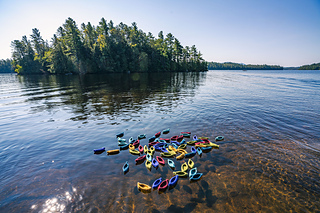
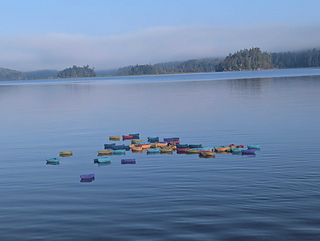
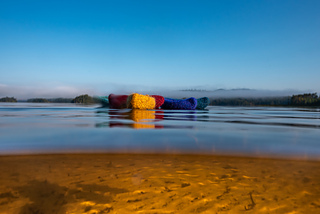
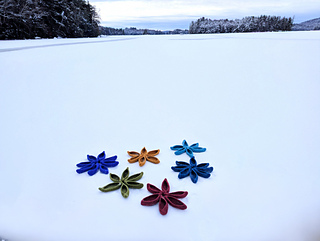

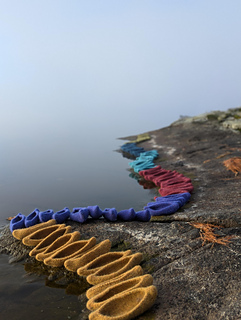
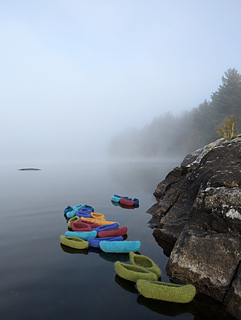
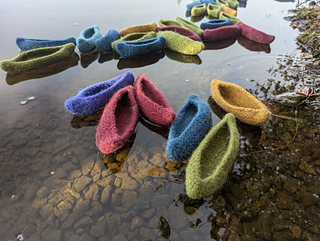
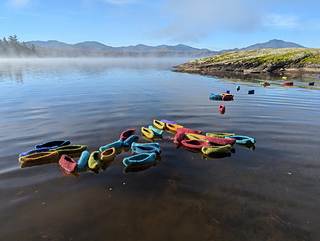
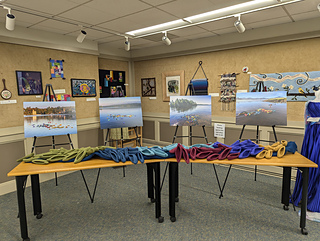

220 projects
stashed
137 times


 handspun
handspun queue
queue favorites
favorites friends
friends needles & hooks
needles & hooks library
library